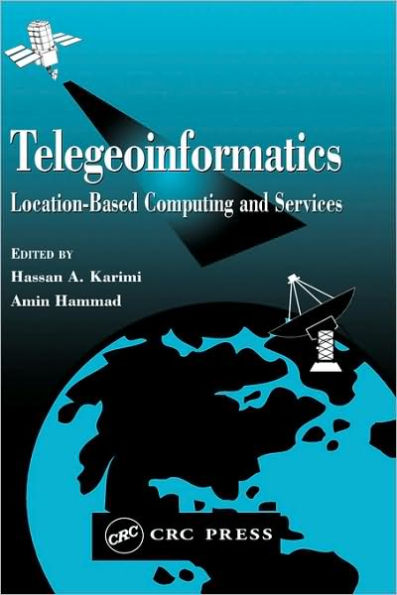Table of Contents
THEORIES AND TECHNOLOGIES
Telegeoinformatics: Current Trends and Future Direction
Introduction
Architecture
Internet-Based GIS
Spatial Databases
Intelligent Query Analyzer (IQA)
Predictive Computing
Adaptation
Final Remarks
References
Remote Sensing
Introductory Concepts
Remote Sensing Systems
Imaging Characteristics of Remote Sensing Systems
Active Microwave Remote Sensing
Extraction of Thematic Information from Remotely Sensed Imagery
Extraction of Metric Information from Remotely Sensed Imagery
Remote Sensing in Telegeoinformatics
References
Positioning and Tracking Approaches and Technologies
Introduction
Global Positioning System
Positioning Methods Based on Cellular Networks
Other Positioning and Tracking Techniques: An Overview
Hybrid Systems
Summary
References
Wireless Communications
Introduction
Overview of Wireless Systems
Radio Propagation and Physical Layer Issues
Medium Access in Wireless Networks
Network Planning, Design and Deployment
Wireless Network Operations
Conclusions and the Future
References
INTEGRATED DATA AND TECHNOLOGIES
Chapter Five: Location-Based Computing
Introduction
LBC Infrastructure
Location-Based Interoperability
Location-Based Data Management
Adaptive Location-Based Computing
Location-Based Routing as Adaptive LBC
Concluding Remarks
References
Location-Based Services
Introduction
Types of Location-Based Services
What is Unique About Location-Based Services?
Enabling Technologies
Market for Location-Based Services
Importance of Architecture and Standards
Example Location-Based Services: J-Phone J-Navi (Japan)
Conclusions
References
Wearable Tele-Informatic Systems for Personal Imaging
Introduction
Humanistic Intelligence as a Basis for Intelligent Image Processing
Humanistic Intelligence
'WEARCOMP' as a Means of Realizing Humanistic Intelligence
Where on the Body Should a Visual Tele-Informatic Device be Placed?
Telepointer: Wearable Hands-Free Completely Self Contained Visual Augmented Reality Without Headwear and Without any Infrastructural Reliance
Portable Personal Pulse Doppler Radar Vision System
When Both the Camera and Display are Headword: Personal Imaging and Mediated
Reality
Personal Imaging for Location-Based Services
Reality Window Manager (RWM)
Personal Telegeoinformatics: Blocking Spam with a Photonic Filter
Conclusion
References
Mobile Augmented Reality
Introduction
MARS: Promises, Applications, and Challenges
Components and Requirements
MARS UI Concepts
Conclusions
Acknowledgements
References
APPLICATIONS
Emergency Response Systems
Overview of Emergency Response Systems
State-of-the-Art ERSs
Examples of Developing ERSs for Earthquakes and Other Disasters
Future Aspects of Emergency Response Systems
Concluding Remarks
References
Location-Based Computing for Infrastructure Field Tasks
Introduction
LBC-Infra Concept
Technological Components of LBC-Infra
General Requirements of LBC-Infra
Interaction Patterns and Framework of LBC-Infra
Prototype System and Case Study
Conclusions
References
The Role of Telegeoinformatics in ITS
Introduction to Intelligent Tranaportation Systems
Telegeoinformatics Within ITS
The Role of Positioning Systems In ITS
Geospatial Data for ITS
Communication Systems in ITS
ITS-Telegeoinformatics Applications
Non-Technical Issues Impacting on ITS
Concluding Remarks
Remarks
The Impact and Penetration of Location-Based Services
The Definition of Technologies
LBSs: Definitions, Software, and Usage
The Market for LBSs: A Model of the Development of LBSs
Penetration of Mobile Devices: Predictions of Future Markets
Impacts of LBSs on Geographical Locations
Conclusions
References



